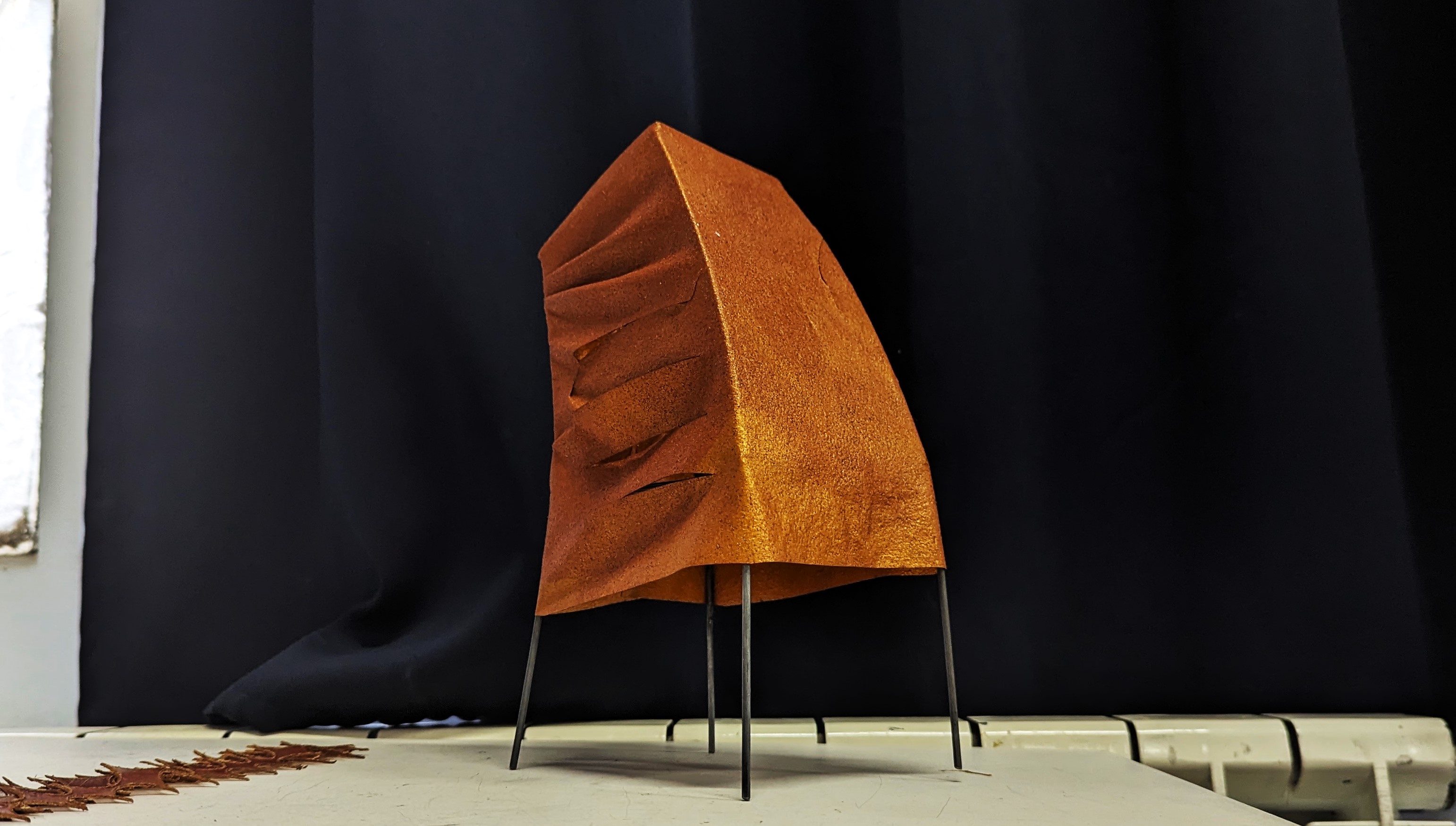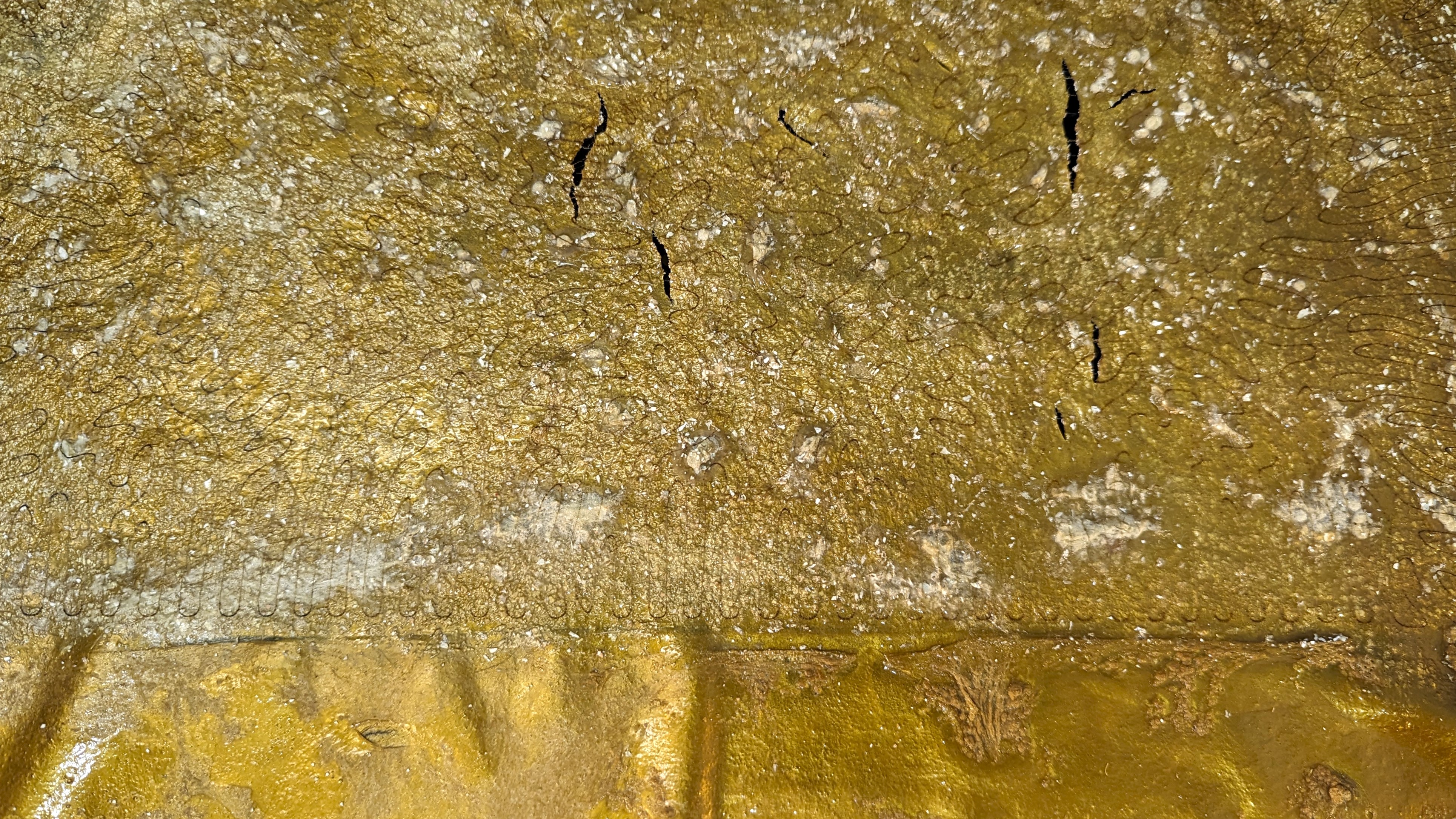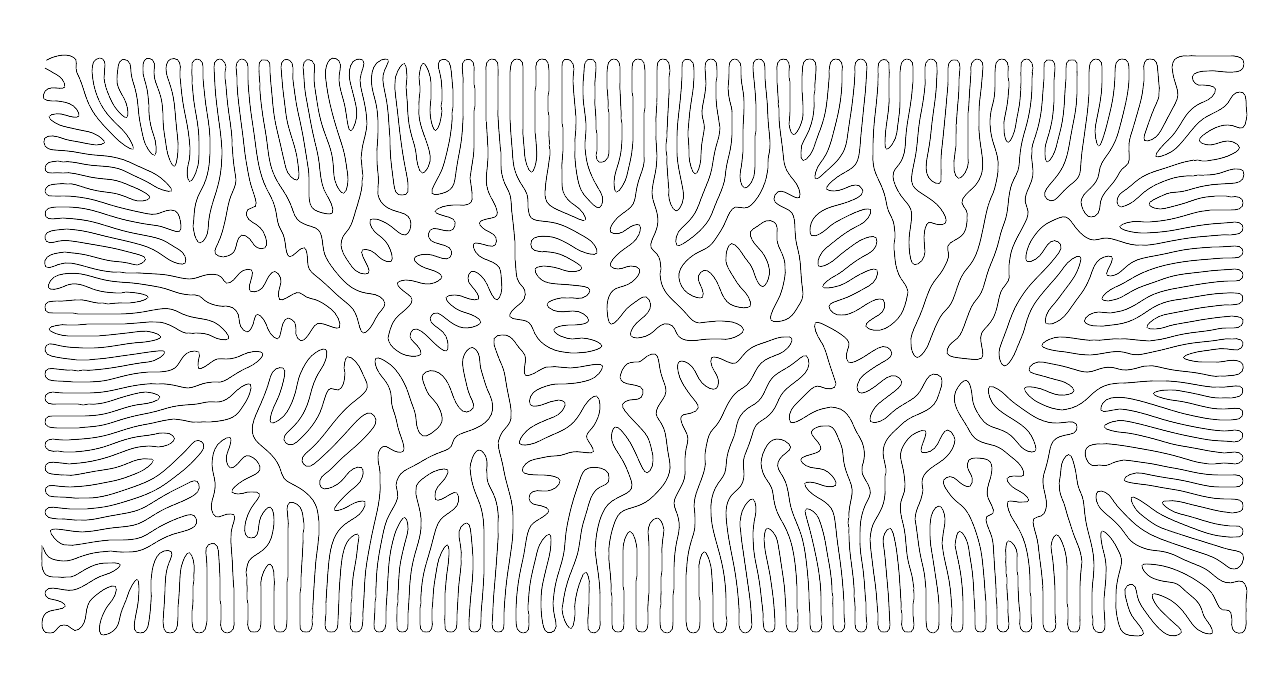Lamp 1¶
We chose sodium alginate to create a Lamp screen, as it has properties that make it translucsent, relatively flexible and water resistant, making it more durable. The idea was to make a surface with a dinamic texture that would generate interesting and organic light effects. We generated openings resambling a marine crature´s gills using the laser cut machine. On the process we encountred several obstacules and failures that iterated the final result.
:::success
Learnings
In regards to biomaterial:¶
- Making a thin biomaterial makes it difficult to demold.
- Stretching a thin biomaterial is more likely tear up.
- Make sure the lamp wireframe is the right size to avoid screen fitting problems.
- Consider shrinkage.
In regards to metal wire production:¶
- Make sure you test welding.
- Weld with detail and precision when attaching thin wires, they might melt and break if too much heat is applied.
:::

Biomaterial Recipes¶
Recipe 01¶
- Water
- Sodium alginate
- Gold Mika
- Red Mika
- Glycerol
Batch 1¶
| Material | Amount |
|---|---|
| Water | 600ml |
| Sodium alginate | 12g |
| Gold Mika | Added by eye, more than Red Mika |
| Red Mika | Added by eye |
| Glycerol | 24g |
Batch 2¶
| Material | Amount |
|---|---|
| Water | 600ml |
| Sodium alginate | 12g |
| Gold Mika | Added by eye |
| Red Mika | Added by eye, more than Gold Mika |
| Glycerol | 24g |
Recipe for Calcium Chloride Solution¶
Calcium Chloride Water
| Material | Amount |
|---|---|
| CaCl | 10g |
| H2O | 100ml |
Steps¶
- Mix CaCl and H2O
- Put in a spray bottle
Material Casting¶
- Make Recipe 01 Batch 1: 1.1. Mix SA in water 1.2. Add colorants 1.3. Mix thoroughly 1.4. Add Glycerol 1.5. Mix thoroughly
- With the same steps, make Recipe 01 Batch 2

- Prepare the Calcium Chloride solution
- Prepare the mold
- Spray the mold and spread the CaCl solution on to the mold
- Pour Batch 1 into the mold
- Pour Batch 2 into the mold at different spots

- Lightly mix the new solution in the mold to create the color effect as you like
- Spray the CaCl solution on the surface
- With a wet tissue paper, dab the surface to remove excess CaCl solution
- Let dry
- To assist the drying process, place a fan to increase airflow
- Wait for 3-4 days to dry
- Slowly remove the material by peeling it from the mold
Laser Cutting¶
Settings¶
| Setting | Value |
|---|---|
| Type | Cut |
| Power | 20 |
| Speed | 10 |
| Machine | Speedy 400 |
Cutting¶
- Prepare the material, make sure it is as flat as possible
- Prepare the file
- Run the laser machine to cut the material
:::success
Testing is important
We made small test materials of the recipes. This allowed us to test different mechanisms: folding, cutting, marking and sticking.
:::

Lamp 2¶
Once again we worked with sodium alginate to create a lamp screen, but this time we decided to use two different textures on the same biomaterial sheet: One with just sodium alginate and colorant which is more flexible and translucent, and a second one to which we added some granules and fibers to increase the hardness and stiffness of the material. The idea was to engrave the fibered texture with a coral generative growht pattern using grasshopper, and generate openings between the two textures in order to play with the geometry and light.
:::success
Learnings
In regards to biomaterial:¶
- Making a thick biomaterial takes more time to dry.
- Pour a thin layer of biomaterial before adding fibers and granules.
- Pour the biomaterial on top of the granules and fibers slowly for them to stay in place.
- Consider shrinkage.
In regards to laser engraving:¶
- Consider the material thickness to define power and speed values.
- If you want a thicker engraving line, lower the laser machine bed to defocus a little.
- If the engraving is not visible, test different variables: lower speed, increase power, make several passes on the same path.
- Make as many tests as possible before using the final biomaterial sheet.
:::

Recipe 02¶
- Sodium Alginate
- Spirulina
- Curcuma
- Gold Mika
- Egg shells
- Horse/Goat Hair
Recipe 03¶
- Sodium Alginate
- Spirulina
Recipe for Calcium Chloride Solution¶
- Same as Lamp 1
Material Casting¶
- Make Recipe 02 solution: 1.1. Mix SA in water 1.2. Add colorants 1.3. Mix thoroughly 1.4. Add Glycerol
- Make the Recipe 03 solution, as Recipe 02
- Prepare the eggshells by crushing them into tiny pieces
- Prepare the hair by cutting to short lengths (around 1-3cm)
- Prepare the Calcium Chloride solution
- Prepare the mold, put a cardboard create a division inside the mold
- Spray and spread the CaCl solution on to the mold
- On one side of the division, pour Recipe 02 solution
- Spray the CaCl solution on the surface of this side of the division
- On the other side of the division, pour in a thin layer of Recipe 03 solution first
- Evenly put the eggshells and hair on to the surface
- Pour the rest of the solution
- Spray the CaCl solution on the surface of this side of the division
- With a wet tissue paper, dab the surface to remove excess CaCl solution
- Let dry
- To assist the drying process, place a fan to increase airflow
- Wait for 3-4 days to dry
- Slowly remove the material by peeling it from the mold
Laser Cutting¶
Settings¶
| Setting | Value |
|---|---|
| Type | Cut |
| Power | 30 |
| Speed | 5 |
| Machine | Speedy 400 |
Laser Marking¶
- Prepare the material, make sure it is as flat as possible
- Prepare the file
- Run the laser machine to engrave/mark the design
Designs¶
In Rhino and Grasshopper, we generated different patterns

Finally, we decided to use this one:
